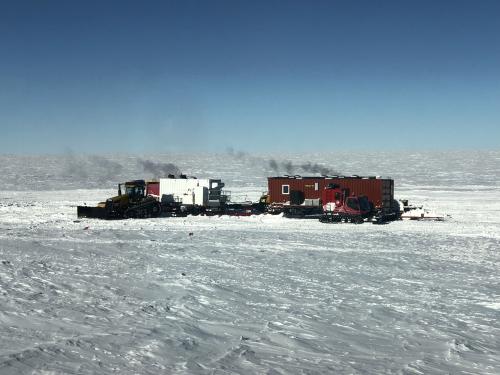When they say the environment here at the South Pole is harsh, that's an understatement. I had no idea how mentally and physically challenging it would be to battle altitude sickness and the dry air. From the minute I stepped off the plane, I felt as if I was gasping for air. The atmosphere is much thinner at 10,000 feet and the changing barometric pressure can actually make it feel as if it is even higher in elevation.
Most athletes who train at high elevations will gradually acclimate their body to the change in altitude by climbing gradually so their body has an adjustment period. Scientists at the South Pole don't have this luxury because they are flown directly from McMurdo (sea level) to the Pole (10,000 feet). The body now needs to make those adjustments in a more dramatic way.
The first night I only slept four hours because I kept waking up and gasping for air in the middle of the night. The station doctor told us this is a perfectly normal acclimation of the body. It is necessary to breathe more frequently at higher altitudes to absorb enough oxygen in the body. At night, your heart rate is lowered so your brain will remind you to breathe as you start to get hypoxic. It is still a very uncomfortable feeling when you are trying to catch your breath, but can't quite keep up.
Many scientists will take an altitude sickness medication called Diamox for the first 72 hours they are at the South Pole. This medication elevates your heart rate so that you can breathe more easily in the high altitude. Usually by 72 hours after arriving most people are well acclimated.
Altitude sickness can last anywhere from a few hours to a few days and is caused by a change in pH in your blood. It affects people differently and is not something you can prepare or train for before reaching altitude. People who have never had it before can develop altitude sickness on their fifth trip to the South Pole.
One group of Polies who did not seem to have adverse affects to the high altitude was the Traverse Team. This group spent 25 days driving tractors at about 6 mph from McMurdo Station to the South Pole through the Transantarctic Mountain range. Because they drove to the Pole, their ascent happened slowly and they were very well acclimated to the conditions at the South Pole upon arrival. The traversers haul materials that can't make the trip in the LC-130. Although they drive about 12 hours a day in individual tractors with only music and podcasts to keep themselves entertained, their living conditions are actually quite comfortable. They tow with them a shipping container that has been converted into a living space complete with working toilets, a shower, and even a laundry machine!




Comments